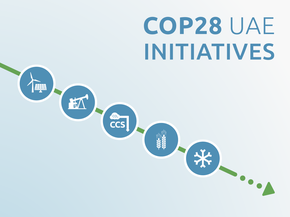Country summary
Overview
NOTE: Our assessment of New Zealand's 2021 NDC update is here.
New Zealand is at a turning point, as it will release an emissions reduction plan by December 2021, which provides an opportunity to set ambitious policies to decarbonise all sectors. The country’s newly-established Climate Change Commission has reviewed the government’s climate policies, and published recommendations on a carbon budget.
New Zealand is one of the few countries to have a net zero emissions by 2050 goal enshrined in law, its Zero Carbon Act, but short-term policies cannot yet keep up with that ambition. New Zealand is increasingly relying on the mitigation potential of the land use and forestry sector to meet its target rather than focusing efforts on reducing emissions from high emitting sectors.
Although included in the Act, methane from agriculture and waste (over 40% of New Zealand's emissions) is exempt from the net zero emissions goal, and has a separate target (at least 24-47% reduction below 2017 levels by 2050), not yet covered by significant policies. Overall, the CAT rates New Zealand’s current climate targets, policies and finance as “Highly insufficient”.
New Zealand submitted an updated NDC in April 2020. The update did not strengthen the country’s 2030 target. Both the present 2030 target – 30% from 2005 levels – and its architecture are deeply flawed. By setting its 30% reduction target against its 2005 emissions excluding land use changing forestry, but then allowing the crediting of its so-called Kyoto forest accounting in 2030 to meet this target, the result is a system that allows net emissions to continue to increase.
Under the present NDC construction, the country's net emissions could be 4% above 2005 levels in 2030, and more than 44% above 1990 net emissions. Gross emissions in 2030 would only be about 18% below 2005 levels with this deeply flawed and illogical architecture.
The government plans to strengthen its NDC based on the Climate Change Commission’s final advice, which ambiguously recommended a target of “much more than 36%”. However, the Climate Change Commission’s advice does not comply with the Climate Change Response Act and is inconsistent with limiting warming to 1.5˚C, which would require New Zealand to set 2030 target of a reduction in gross emissions of at least 44%.
Aside from the need for a major increase in the target number itself, the government also needs to revisit its target architecture and drop the much discredited “gross net” approach to target setting. New Zealand one of only a few countries in the world using this “gross net” accounting system to calculate its 2030 target.
The CAT rates New Zealand’s climate targets, policies and finance as “Highly insufficient”. The “Highly insufficient” rating indicates that New Zealand’s climate policies and commitments are not stringent enough to limit warming to 1.5°C and need substantial improvements. New Zealand’s target is rated “Critically insufficient” when compared with its fair-share contribution to climate action and “Insufficient” when compared to modelled domestic pathways. Its policies and action do not put in on track to meet this target and its climate finance is inadequate.
New Zealand should increase both its emissions reduction target and climate policies, and provide additional, predictable, finance to others to meet its fair-share contribution.
New Zealand is expected to see some significant policy announcements in late 2021, including an emissions reduction plan (ERP). In June 2021, after a period of public consultation, the Climate Change Commission issued its final advice on how New Zealand can achieve a low emissions future. Many of the recommendations are economy-wide, cover short timeframes of one or two years, and if adopted will lead to substantial climate action.
The government is required, by 31 December 2021, to set out emissions reduction plans for 2022 to 2025 and three emissions budgets for the period of 2022 to 2035. As of mid 2021, New Zealand is not expected to meet its NDC under current policies and actions. The CAT rates New Zealand’s climate policies and action as “Highly insufficient”.
The government’s policy response to COVID-19 has been a mix of fossil fuel support and small steps in climate policy related to green investment and the public sector. Estimated emissions in 2020 are expected to be similar to 2019 emissions (with a 0.3% decline), as the impacts of COVID-19 on emissions have been minimal. In its response to COVID-19, the government introduced post-COVID-19 legislation to fast-track projects. Neither environmental safeguards nor climate change impacts were mandatory for the projects, risking the approval of emissions-intensive projects.
The 2021 Budget allocated NZD 300m to the Green Investment Finance Fund and NZD 100m on other climate change initiatives such as a Carbon Neutral Government Programme aiming for the public sector to be carbon neutral by 2025.
In June 2020, the government reformed the Emissions Trading Scheme, continuing to exempt the country’s largest contributor to greenhouse gas emissions – the agriculture sector – from a price on its emissions until 2025, when it was originally proposed to cover all sectors. The amendment sets a cap on emissions that can be traded, which will decrease from 2021. The reform phases out free industrial allocations of carbon units, and lifts the cap on the price of carbon from NZD 25 (USD 17) to NZD 35 (USD 23) per New Zealand unit (equal to one tonne of CO2 equivalent). The government plans to ban new coal fired boilers by the end of 2021, and is consulting on plans to phase out fossil fuels in process heat by 2037, as recommended by the CCC, with a few exemptions.
Other climate policy highlights include the renewable electricity target of 90% by 2025 and 100% by 2035. The Government has an electric vehicle target for government fleet vehicles to be emissions free by 2025/26 and has introduced the country’s first-ever CO2 emissions standard for imported cars in 2021. The government is developing a hydrogen roadmap. It has a vision paper in support of opportunities for domestic use and the export of green hydrogen.
New Zealand’s domestic target in 2030 is not consistent with the 1.5°C temperature limit when compared to modelled domestic pathways. The target aims for GHG emissions to be 30% below 2005 levels by 2030 (including LULUCF).
The Climate Change Commission advises that the 2030 target should be “much more than 36%” but failed to recommend a specific number. The CAT finds that if all countries were to follow New Zealand’s domestic target approach, warming could reach over 2°C and up to 3°C. New Zealand has an opportunity to improve its domestic target by raising its ambition and setting a target that will achieve a lower emissions target for 2030. Subsequent targets should remain economy-wide, covering all sectors including agriculture. The CAT rates New Zealand’s domestic target as “Insufficient”.
The CAT’s assessment of New Zealand’s total fair share contribution takes into account its emissions reduction target and its climate finance.
We rate New Zealand’s target as “Critically insufficient” when compared with its fair-share emissions allocation. The “Critically insufficient” rating indicates that New Zealand’s fair share target in 2030 reflects minimal to no action and is not at all consistent with the 1.5°C temperature limit. New Zealand’s target is not in line with any interpretation of a fair approach to meeting the 1.5°C limit. Substantial improvements are needed. Some of these improvements should be made to the domestic emissions target itself, others could come in the form of additional support for emissions reductions achieved in developing countries in the form of finance. If all countries were to follow New Zealand’s approach, warming would exceed 4°C.
New Zealand’s climate finance needs substantial improvements to be consistent with the 1.5°C temperature limit. The country remains committed to climate finance in the period post-2020, but contributions to date have been very low compared to its fair share. The CAT rates New Zealand’s climate finance as “Highly Insufficient”. To improve its rating New Zealand needs to improve climate finance commitments and make explicit commitments to prevent investments in fossil fuel finance abroad.
While New Zealand’s finance rating is poor, it is one rating level better than New Zealand’s "Critically insufficient" fair share target rating and can therefore improve the overall fair share rating. Taking both New Zealand’s emissions reduction target and climate finance into account, we rate the overall fair share contribution as “Highly insufficient”.
For the past 30 years, New Zealand’s climate action has primarily relied on forests planted in the 1990s rather than effective climate policy, and the carbon removal benefits of the forests are diminishing. New Zealand’s reliance on Land Use, Land Use Change and Forestry (LULUCF) to meet its NDC target has increased from 13% to 35% since last year. Emissions reductions from emissions-intensive sectors should be a focus, rather than reliance on the uncertain mitigation potential of the LULUCF sector.
New Zealand has also faced criticism over its LULUCF carbon accounting methodology. Plantation forests have a pattern of sinking carbon during tree growth and releasing carbon when harvested. New Zealand’s LULUCF accounting methodology uses a “modified activity-based” approach which has been found to mask real emissions. This method has implications for the emissions trading scheme, the NDC, and the emissions budgets proposed by the Climate Change Commission.
New Zealand passed its Zero Carbon amendment to the Climate Change Response Act in 2019, which sets a target for all greenhouse gases except for biogenic methane – methane from agriculture and waste – to reach net zero by 2050. Methane emissions from these two sectors represent over 40% of New Zealand’s current emissions. Implementation is key and the methane exemption weakens the target considerably.
There is a separate target for biogenic methane emissions to be at 24-47% below 2017 levels by 2050. A true commitment to net zero would require a further reduction of 18-25 MtCO2e in 2050, corresponding to the residual methane emissions that would remain unmitigated by the 2050 target. These would need to be achieved in other sectors, in particular through full decarbonisation of energy and industry emissions by 2050.
The net zero target has good legal architecture. However, in addition to biogenic methane, international aviation and shipping are outside of the target’s scope, and the government reserves the right to use of international offset credits to meet the target. The CAT evaluates the target as “Poor”. The full details are here.
Further analysis
Latest publications
Stay informed
Subscribe to our newsletter




